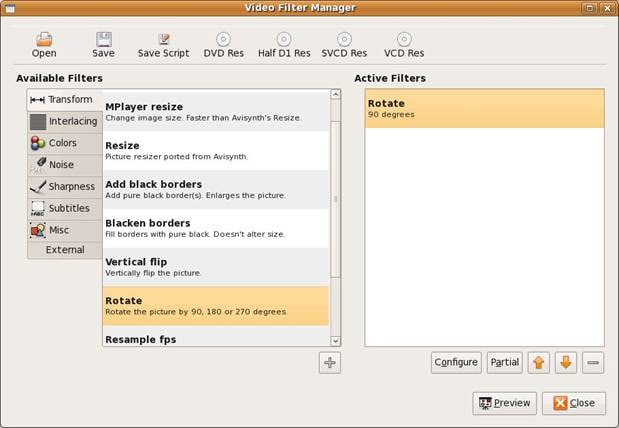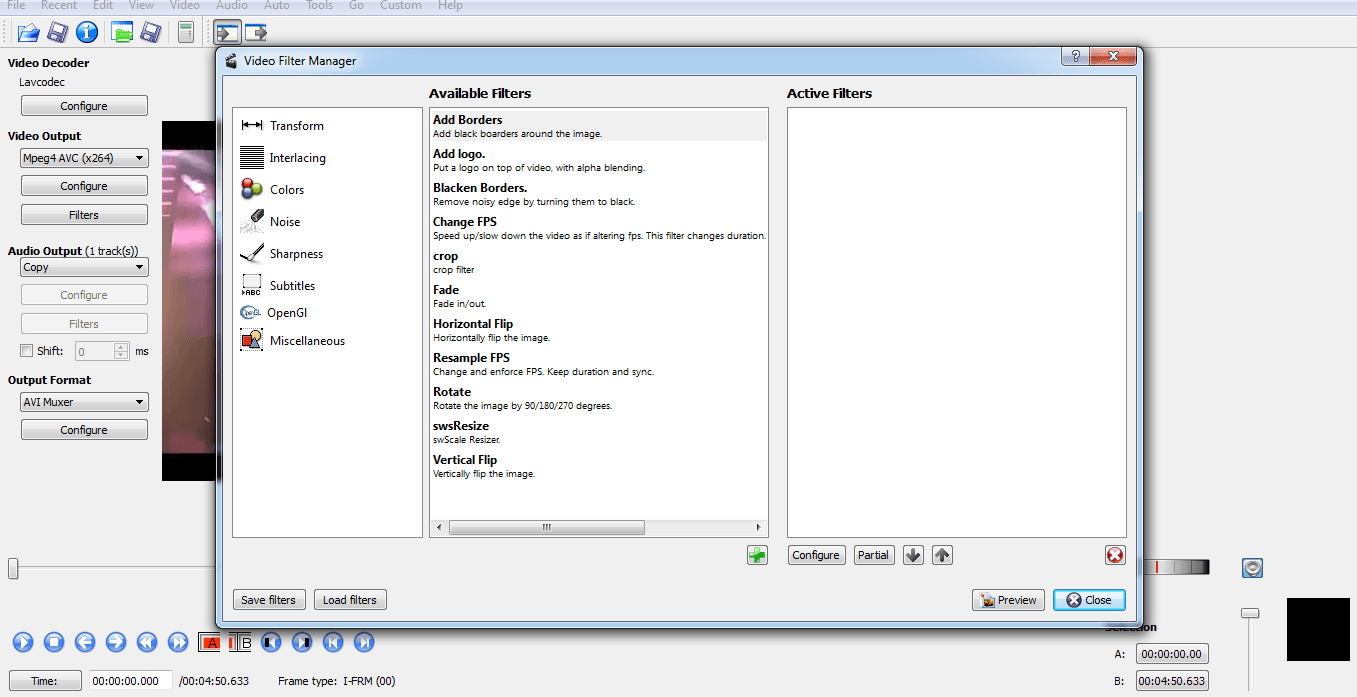


Depending on the resolution of the external video, you may also have to feed it into the Scale node to halve the vertical resolution.Īlso, in all of your blur nodes, make sure that the X value is double the Y value. If you’re compositing a blender-render with an external video, you need to make sure that video runs at sixty frames per second. If you happen to be using the Blender Compositor, you may have to make a few more changes. But keep in mind, all of the examples I use here are in 1080i.
#Avidemux crop deinterlace 720p
But for those of you who wish to create the highest quality HD, I suggest rendering at 1920x720 with a Asp settings of AspY:2 to AspY:3 The result of this can be re-sized to either 1080i or 720p with the proper aspect ratio of 16:9 and retain the highest quality. If you render at 1920x540 and later re-size your resulting render to 1280x720, you’ll be hard-pressed to notice the slight drop of vertical detail, so you can go ahead and do this to save a little bit of render time if you like. (my apologies for the ugly table, you might need to paste it into notepad, or another text editor for the columns to line up) This chart shows the conversions for the most-used formats:
#Avidemux crop deinterlace full
720p is non-interlaced, and thus must be rendered at full frame, but still at sixty frames-per-second. Whichever format you’re using, you will need to halve the value of SizeY, and double the value of AspY, except in the case of 720p.

Make sure all layers are visible so all of your NLA strips show up, and in the NLA editor, with the frame indicator at 1, select all of you strips and scale them to exactly 2.0įor IPO curves, simply double the Xmax value in the Transform Properties box.Īlso, if you have any softbody objects in your scene, you should cut their Speed variables in half, and re-bake their animation if necessary. I have found this much easier to work with, and after making the desired alterations, the result can be fed into Avidemux for interlacing.įirst off, if you’ve been working at 30 frames-per-second, you will need to convert your scene to 60 frames-per-second (or from 25 to 50 for those of you in the PAL crowd) This basically entails doubling the length of any IPOs and NLA strips that compose your animation. To get around these annoyances, I propose rendering video at half the normal vertical resolution, at sixty frames per second. Let’s face it, in post-processing, interlaced video is a pain to deal with. You might also find subtle artifacts during transitions, especially when dealing with heavy motion. When sequencing pre-rendered interlaced video in the Video Sequence Editor, you can run into problems when you try to add other elements or apply filters. Many problems arise when using Blender’s fields option to obtain an interlaced picture. This walkthrough assumes you have an in-depth working knowledge of Blender, and at least a casual understanding of Avidemux.

I hope to cover these things in a future guide. It however, does not cover the necessary procedure for encoding your final video into a format that will be “broadcast ready”, or ready to be burned to an HD-DVD or Blue-Ray disc. This guide will walk you through altering a Blender scene so that it can be rendered for Standard Definition or High Definition at 60 fps, and then interlaced in Avidemux. Creating Video for Broadcast Using Blender and Avidemux


 0 kommentar(er)
0 kommentar(er)
